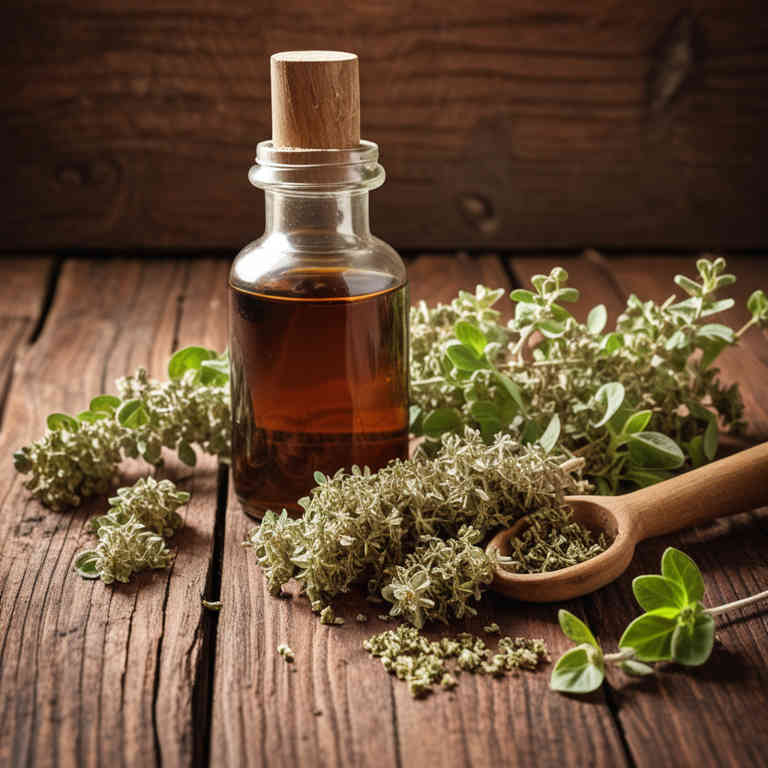Origanum vulgare tincture for medicinal use

Origanum vulgare tincture is a concentrated liquid extract made from the dried leaves and flowers of oregano, a common Mediterranean herb.
It is prepared by soaking the plant material in alcohol to extract its active compounds. This tincture is widely used in herbalism for its antimicrobial, anti-inflammatory, and digestive properties. It is often taken internally to support respiratory health, ease digestion, or alleviate menstrual discomfort.
Additionally, it can be used externally as a rub to relieve muscle aches and minor skin irritations.
Uses
Origanum vulgare tincture has been used to treat digestive issues, respiratory conditions, and as an antimicrobial agent for centuries.
Historically, it was valued in ancient Greece and Rome for its healing properties and was often used to flavor food and medicine. Traditional uses included easing coughs, reducing inflammation, and promoting digestion, with its essential oils being highly prized. In modern times, it is widely used in herbal medicine for its antioxidant and anti-inflammatory effects, supporting immune health and aiding in the treatment of colds and flu.
Today, it remains a popular natural remedy, available in various forms for both culinary and therapeutic purposes.
Benefits
Origanum vulgare tincture has health benefits such as antimicrobial, anti-inflammatory, and antioxidant properties.
It is commonly used to support respiratory health by helping to alleviate symptoms of colds, coughs, and bronchitis. The tincture may also aid in digestion by stimulating the production of digestive enzymes and reducing bloating. Additionally, it has been traditionally used to relieve headaches and reduce stress due to its calming effects.
Origanum vulgare tincture is also believed to have immune-boosting qualities that can help the body fight off infections.
Constituents
Origanum vulgare tincture active constituents include carvacrol, thymol, terpenes, flavonoids, and phenolic acids.
These compounds contribute to its antimicrobial, anti-inflammatory, and antioxidant properties. Carvacrol and thymol are the primary phenolic compounds responsible for its antimicrobial activity. Flavonoids support immune function and may help reduce oxidative stress.
This tincture is commonly used for digestive support, respiratory health, and as a natural remedy for infections.
Preparation
To make Origanum vulgare tincture, first gather fresh or dried oregano leaves and wash them thoroughly if fresh.
Next, place the oregano in a clean glass jar and cover it completely with a high-proof alcohol such as vodka or grain alcohol. Seal the jar and let it sit in a dark, cool place for 4 to 6 weeks, shaking it occasionally. After the steeping period, strain the liquid through a cheesecloth or fine mesh strainer to remove the plant material.
Store the tincture in a dark glass bottle in a cool, dry place, and label it with the date and contents for future reference.
Side Effects
Origanum vulgare tincture may lead to gastrointestinal discomfort, such as nausea, vomiting, or stomach upset, especially when taken in high doses.
It can also cause allergic reactions in individuals sensitive to plants in the Lamiaceae family, which includes oregano. Prolonged use may result in liver toxicity, as some compounds in the tincture can be harmful to liver function. It may interact with certain medications, particularly those affecting the central nervous system or blood clotting.
Therefore, it is important to consult a healthcare professional before use, especially for individuals with pre-existing health conditions.